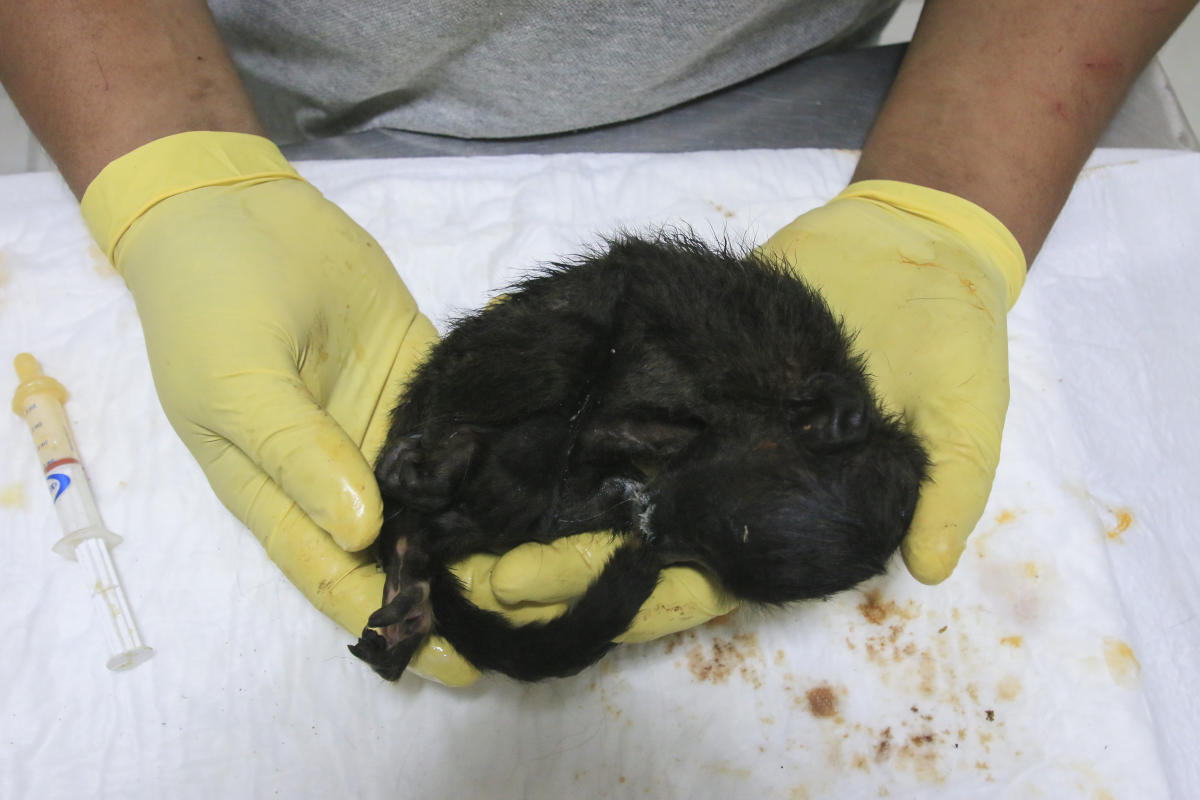
[ad_1]
At least 138 howler monkeys have been found dead in Mexico since May 16 amid a heat wave that reached 113 degrees on Tuesday.
The monkeys, which reportedly have been falling dead out of trees “like apples,” are among the latest victims of extreme heat caused by the current El Niño cycle, which is having dire effects on humans and animals alike. “They were in a state of severe dehydration, and they died within a matter of minutes,” wildlife biologist Gilberto Pozo told the Associated Press.
Yahoo News spoke to Nikhil Advani, senior director for wildlife and climate resilience at the World Wildlife Fund (WWF) about how global warming is affecting animals like the howler monkeys in Mexico, and what conservationists are doing to try to protect them.
🐵What is happening?
El Niño, a global climate-warming phenomenon that happens every few years, causing significant fluctuations in temperature and other weather disruptions, has been exacerbated in recent years by unprecedented heat from climate change.
This combination, Advani explained, has proven fatal for a variety of wildlife, including the howler monkeys, primates that are mainly found in Central and South America and known for their distinct roar.
“All species have temperature thresholds within which they can tolerate,” explained Advani. “In the case of these monkeys, these temperatures have clearly exceeded those thresholds.”
Advani said that in response to the increasingly hot temperatures, some animals are forced to move to new locations, and in some cases, even their body sizes have changed to adapt to new environments. For some species, such as sea turtles in Colombia, temperature changes have also caused an imbalance in sex ratios, which disrupts mating.
“There’s also the impact of a lack of water availability that often goes hand in hand with extreme heat events,” said Advani, adding that natural disasters and other extreme weather events like severe flooding, cyclones and hurricanes can also cause a shortage of food for many animals.”
“All of these things are impacting species in many ways,” he said. “We’re seeing species that are going extinct, potentially due to impacts of climate change.”
Climate change is also causing ocean temperatures to rise, resulting in the bleaching of about 63% of the world’s coral reefs. During these events, coral become pale and can eventually die. The devastation impacts other living creatures that depend on the coral.
“In the places where we have coral reef systems, they are the foundation of the ecosystem there … they are the lifeblood of that ecosystem,” said Advani. “If we lose that coral reef, you see a huge reduction in species diversity.”
Advani explained that once the El Niño season ends, flooding, droughts and extreme heat won’t be as severe as what we’re seeing now. However, climate change is worsening the long-term impacts of these cycles.
“Climate change is something that’s here to stay,” said Advani. “We tend to look at El Niño years as a proxy for how bad things could get potentially within even a decade or two.”
🌏What’s being done to protect wildlife?
Conservationists are working on a range of research and initiatives to reduce the negative effects of climate change on wildlife.
For example, WWF says that it has funded 25 projects around the world, including the Wildlife Adaptation Innovation Fund designed to help vulnerable animal populations. They include:
-
Improving nest design for birds
-
Providing artificial shade structures near watering holes
-
Controlling sand temperatures for sea turtles
-
Providing additional water sources for animals
Advani noted that there is a chance that some of these solutions may not work because creatures may face challenges adapting to human-made solutions. So organizations like WWF test out the solution on a smaller scale and then scale up if it proves to be successful.
[ad_2]